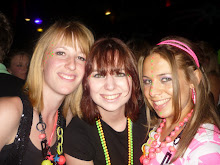
A requirement for the evaluation was to conduct user testing on the final product. My aim for this survey was to check that I stuck to the client brief and provided a website that would appeal to the target audience and would provide information for both members and non-members.
Eight questions were put together that I would hope give me the answers that I needed to conclude my evaluation.
1) Do you think the overall design relates to the current leaflet design?
Everyone agreed that the website related to the leaflet design. Looking back at previous posts you can see the background in all of the website images have the same background. This was taken from the leaflet design and I think this is why people relate it to the leaflet design.
2) On the scale of 1 to 5 (5 being the highest) which elements do you think are important to have on the website?
Choices were: About us, Gallery, Timetable, Uniform, Party info, Competitions, Shows, Contact
For this question I was trying to see whether the members and non-members would find certain pages more important. To my surprise the majority of the testers thought all of the pages had some importance. The 'party info' page was the least popular, which was expected because this is mainly aimed at parents wanting to throw parties for their children.
I was not expecting for non-members to have an interest in the competition pages however I was wrong.
3) Which page did you find most appealing?
As intended the 'gallery' page was the most appealing to he users although some users preferred the larger gallery on the uniforms page. I could understand this as this was something that I wanted on the gallery page however the gallery limited you to the amount of pictures allowed per album. I was surprised that some users also found the homepage the most appealing, perhaps because it is the first page that you come across.
4)Do you think that the site appeals to current members, people wishing to join the club or both?
Every user apart from one selected the answer 'both' this was what I intended when starting the project, I did not want the site to be just for potential new members but for current members, hence why the gallery and competition pages are important.
5) On the scale of 1 to 5 how easy was the navigation?
Another issue when I browsed other dancing websites was that the navigation was at times quite confusing however my results showed that my menu was clear and easy to navigate through. The aim of the site was to have a minimal looking menu with a drop down to provide extra pages.
6) Were all of the pages clearly labelled?
Nearing the end of the project it occurred to me that there were no titles on the pages. This was noted and changed making it now all clear to the audience which page they were on.
7) Can you think of anything else that could be included on the website?
When asking suggestions for extra elements I received some useful feedback. Some people suggest music/video, this was something which myself and Jess discussed however we decided to leave it until there was some actual footage to put on the site. A few users also suggested having a feedback/comments page, like said in previous posts this was tried but could not be achieved although we are adding an announcements page so Jess can write updates for Street Beatz.
8)Are there improvements that you could suggest to make the website more appealing?
The one improvement that was suggested was to tone down the red on the people, some people found that they blended into the background too much, which I agree with.
The user testing has been very beneficial and has clearly shown that I have fulfilled the client brief and so I am very happy with the outcome.


































